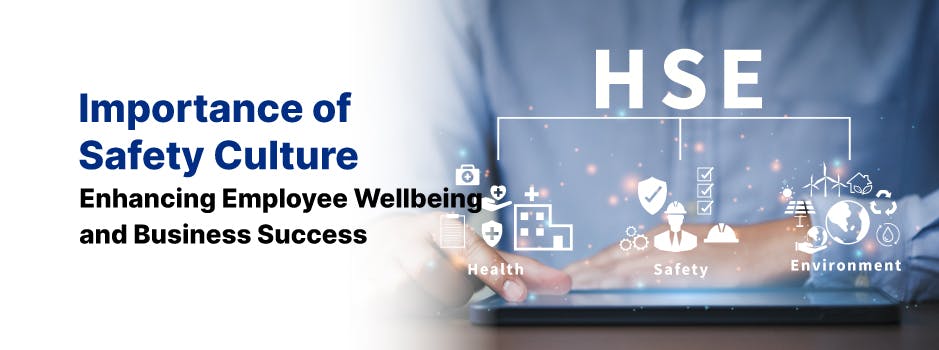Introduction
Safety culture is an integral part of a successful business, as it promotes employee wellbeing and contributes to overall business success. A strong safety culture reduces workplace accidents, lowers costs associated with incidents, and improves employee morale, leading to increased productivity and a better work environment. This article will discuss the importance of safety culture in business and how fostering it can lead to enhanced employee wellbeing and business success. We will also touch upon OSHA 10 and OSHA 30 training courses as essential components in developing and maintaining a solid safety culture.
The Significance of Safety Culture
A Decrease in Workplace Accidents
A strong safety culture leads to a safer work environment by reducing the likelihood of accidents and injuries. Through training, employees become more knowledgeable about potential hazards and are better equipped to identify and address them. This results in a reduction in workplace accidents, leading to a safer and more productive work environment.
Lower Costs Associated with Incidents
Workplace accidents can be costly for businesses, with direct costs such as medical expenses, workers' compensation claims, and legal fees. Indirect costs include lost productivity, employee turnover, and damage to a company's reputation. A robust safety culture can reduce these costs by minimizing the frequency and severity of accidents, leading to financial savings and a healthier bottom line.
Improved Employee Morale
A strong safety culture demonstrates that a company values its employees and is committed to their wellbeing. This fosters a sense of trust and loyalty among employees, leading to improved morale, increased job satisfaction, and higher retention rates. When employees feel safe and supported in their work environment, they are more likely to be productive and engaged, leading to overall business success.
OSHA 10 and OSHA 30 Training: Building a Strong Safety Culture
OSHA 10 Training
OSHA 10 training is a 10-hour course designed to provide workers with a basic understanding of occupational safety and health principles. This training helps employees recognize, avoid, and prevent workplace hazards, contributing to a stronger safety culture. By investing in OSHA 10 training, businesses can demonstrate their commitment to employee safety and wellbeing, while also meeting regulatory requirements.
OSHA 30 Training
OSHA 30 training is a more comprehensive 30-hour course that offers in-depth instruction on various safety and health topics. This training is aimed at supervisors and managers, equipping them with the knowledge and skills necessary to promote a safety culture within their teams. By incorporating OSHA 30 training into a company's safety program, businesses can ensure that their leaders are well-versed in safety regulations and best practices, contributing to a safer work environment and better business outcomes.
Strategies for Fostering a Strong Safety Culture
Top-Down Leadership
A strong safety culture starts with leadership. Company leaders should prioritize safety, setting the tone for the entire organization. By demonstrating a commitment to safety through actions and policies, leaders can inspire employees to follow suit and embrace safety as a core value.
Continuous Training and Education
Providing ongoing safety training and education is crucial for maintaining a strong safety culture. Businesses should invest in programs such as OSHA 10 and OSHA 30 training to ensure that employees are well-versed in safety regulations and best practices. By fostering a learning environment that prioritizes safety, companies can equip employees with the tools and knowledge necessary to maintain a safe and healthy work environment.
Open Communication
Encouraging open communication about safety concerns and issues is vital in fostering a strong safety culture. Businesses should establish channels for employees to report hazards, incidents, and near misses without fear of retaliation. By promoting transparency and encouraging employees to speak up, companies can more effectively address safety concerns and continuously improve their safety culture.
Employee Involvement
Involving employees in the development and implementation of safety policies and programs helps to create a sense of ownership and commitment to safety. By empowering employees to participate in safety committees, conduct inspections, and contribute to safety initiatives, businesses can foster a safety culture that is ingrained at every level of the organization.
Regular Audits and Inspections
Conducting regular safety audits and inspections helps businesses identify potential hazards and areas for improvement. These assessments should be viewed as opportunities to learn and improve safety measures, rather than as punitive actions. By continuously evaluating and refining safety procedures, businesses can maintain a strong safety culture and minimize the risk of accidents and injuries.
Recognition and Reward
Recognizing and rewarding employees for their commitment to safety is an effective way to reinforce the importance of safety culture. Businesses can establish safety award programs, offer incentives for safe behavior, and publicly acknowledge employees who contribute to a safer work environment. By celebrating safety achievements, companies can encourage employees to take ownership of their safety and the safety of their coworkers.
Conclusion
In conclusion, a strong safety culture is essential for enhancing employee wellbeing and achieving business success. By prioritizing safety, providing continuous training and education, and fostering open communication and employee involvement, businesses can create a work environment that is both safe and productive. Investing in OSHA 10 and OSHA 30 training courses is a crucial step in developing a solid safety culture that will benefit employees and the business as a whole. By embracing safety as a core value, businesses can reduce accidents, lower costs, and improve employee morale, leading to increased productivity and overall success.

